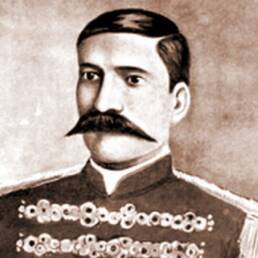If you love soulful music, a splash of Indian history, and the enigma of the Rubik’s Cube, step into the captivating world of Gina, a Budapest-born musician who embarked on a remarkable journey to reconnect with her Romani roots. And the story cannot get more interesting.
The Romani people, often known as Gypsies, have a history shrouded in mystery and misconceptions. While many believed they originated from Egypt, the truth is far more fascinating.
The Romani people can trace their ancestry back to the northern and western regions of India. Over 1,500 years ago, this vibrant community migrated to Eastern Europe. Genetic sequencing studies have led most researchers to this conclusion, despite a few disputes.
However, a fateful misunderstanding occurred when they reached, leading local Europeans to mistakenly believe they were Egyptians. Consequently, the name “Gypsy” stuck. But history finds a way.
Romani culture, originating from stateless migrants from India, has had a fascinating influence. It’s evident in flamenco music, Spanish loan words, and notable figures like Pirlo, Cantona, Stoichkov and even Charlie Chaplin, who claimed to have had a Romani ancestry.
Intriguingly, Saint Sarah, also known as Sara-la-Kâli, the patron saint of the Romani people, is believed to be associated with the Hindu goddess Kali, commonly worshiped in northern India, where Romanis supposedly originated from.
Gina, our protagonist, also a Romani descendant, found herself captivated by her Banjara heritage. Determined to unravel the secrets of her Gypsian ancestry, she embarked on an awe-inspiring adventure to India and Pakistan.

There, she delved into the depths of classical music, immersing herself in its rich traditions. Embracing the vibrant cultural tapestry of her forebears, Gina learned Kathak dance, an expressive form of storytelling through movement.
With each intricate step, she breathed life into the tales of her ancestors believed to be from areas near river Ravi. Her in-depth journey in music and dance bridged the gap between generations, and eventually she became known as Guru Gina.
She embraced the world of Pakistani television dramas, immersing herself in the colorful realm of storytelling. With her innate talent and dedication, she seamlessly slipped into various roles, captivating audiences with her mesmerizing performances.
Taking her artistic prowess to new heights, Gina even ventured into songwriting in Urdu. She composed “Yadoon ki Kahani,” a heartfelt melody that addressed the haunting issues of terrorism and through her soul-stirring voice, Gina aimed to raise awareness and promote peace.
But, why exactly did we talk about the Rubik’s cube in the beginning, the enigmatic toy that puzzled the world for the last four decades? Here’s where the story takes a bizarre twist and Guru Gina’s full name resonates with familiarity. Gina Rubik.
If you’re still wondering, she is the niece of none other than Ernő Rubik, the renowned Hungarian inventor of the Rubik’s Cube. Back in 1974, he meticulously crafted designs for a three-dimensional puzzle, giving birth to the first working prototype of the Rubik’s Cube.
Imagine the fascinating blend of the Rubik’s Cube’s mystery and the boundless creativity of the Banjara people coursing through your veins. Gina, inheriting her family’s artistic prowess, wholeheartedly embraces her musical gifts with the same fervor and ingenuity.
@GinaRubik ‘s journey is a testament to the enduring spirit of the Romani people. From her Budapest roots to the depths of India and Pakistan, she weaves together the threads of her heritage, creating a tapestry of culture and artistry.
Sources
- Gina Rubik on Duniya TV,
- Gina Rubik YouTube channel, https://youtu.be/E9AKL241g_M
- For further read: Interview with Gina Rubik http://imanshowcase.blogspot.com/2012/10/interview-with-gina-rubik-great.html?m=1
- RK Roshni, A Roma pursuing her Indian connection, The Hindu, https://www.thehindu.com/news/cities/Thiruvananthapuram/a-roma-pursuing-her-indian-connection/article62015815.ece/amp/
- Katherine Harmon, Genetic Sequencing Traces Gypsies Back to Ancient Indian Origin, https://blogs.scientificamerican.com/observations/genetic-sequencing-traces-gypsies-back-to-ancient-indian-origin/?fbclid=IwAR2EB17BcDamr7VbnoMFDBGdlXDOV1vvrVgNntn2vyxAwoS3V48bz_P8JvI_aem_th_AUAA4yyzs8nziqmN0i8Ue9Art3_Qk1SSvy5oR89Mb9LTCLitztNW86vIFa8PXvUSgdI&mibextid=Zxz2cZ
Image attributes
- Inventor Erno Rubik demonstrates his cube in London in 1981. Photo: Associated Press/John Glanvill * __1975, https://www.wired.com/2009/01/dayintech-0130/
- Acoma, Saintes-Maries-de-la-Mer Sainte Sara from Wikimedia Commons CC BY-SA 3.0
- Christian Romanies during the pilgrimage to Saintes-Maries-de-la-Mer in France, 1980s Yann from Wikimedia commons • CC BY-SA 4.0




